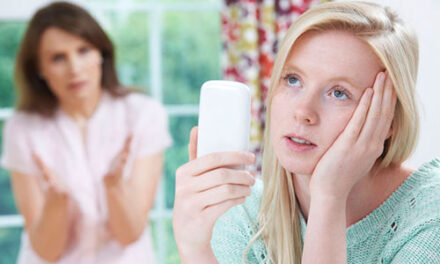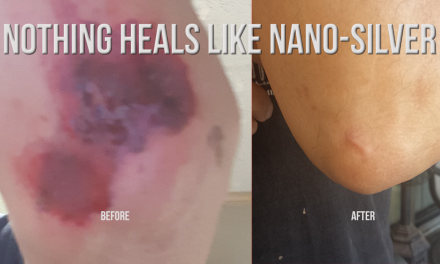Blue light-which comes from sunlight, digital devices (computers, tablets, smartphones, etc.) and artificial light,1,2,3,4,5,6 penetrates deeply into the human eye and has great potential to damage retinal tissue.7,8,9,10 This ongoing exposure to blue light (regardless of the source) is a major risk factor for various retinal pathologies.11,12,13,14 In fact, research15 has demonstrated that headaches, eye fatigue, disturbed visual acuity, mucosal dryness, and eye burning and other indications of eye strain are associated with the daily use of video display terminals on computers and other electronic devices, and are common with three or more hours/day of exposure. Furthermore, some research indicates blue light exposure from sunlight is a risk factor for the development of age-related macular degeneration.16,17 Such visual health-related symptoms in adults and children resulting from blue light digital exposure is now referred to as Computer Vision Syndrome (CVS).18 Perhaps most alarming, children may be at higher risk for blue light retinal damage than adults, since their eyes absorb more blue light than adults from digital device screens.19,20
Children’s exposure to blue light
More than 70 percent of American adults report their children receive more than two hours of screen time per day-and among the most popular activities children engage in are playing on a digital device (23.1 percent) and watching TV (20.1 percent). Not surprisingly, American adults report their children experience the following after being exposed to two or more hours of screen time:21
- Headaches (8.8%)
- Neck/shoulder pain (5%)
- Eye strain, dry or irritated eyes (9.1%)
- Reduced attention span (15.2%)
- Poor behavior (13.3%)
- Irritability (13.5%)
Now consider that personal electronic devices are able to stimulate blue-light-sensitive ganglion cell photoreceptors that regulate circadian rhythms.22 As a result, cellular telephone, tablet and personal computer use before bedtime can delay sleep onset, degrade sleep quality and impair alertness the following day.23 Extended use of these devices has also been shown to cause symptoms of dry eyes, blurred vision and headaches.24 Limitation of personal electronic device use before bedtime is recommended to be the most effective method for reducing light-induced sleep disruption in children.
The importance of lutein and zeaxanthin isomers
So besides restricting digital device us, what can concerned parents do to help protect their children’s eyes from damaging blue light? Enter lutein and zeaxanthin isomers (rr- and rs-(meso)-zeaxanthin). These carotenoids (related to beta-carotene and lycopene) are found in high concentrations in the part of the retina where they play a critical role in protecting against blue light.25 Furthermore, supplementation with lutein and zeaxanthin isomers can provide substantial protection against blue light damage.
Of all the carotenoids, only lutein and zeaxanthin isomers are located in the eye, and make up the macular pigment. As a result of these carotenoids being yellow, they selectively absorb blue light, which protects the retina from associated damage. In short, they act as primary filters of blue light.
However, the average daily intake of lutein and zeaxanthin in the U.S. is less than 2 mg and less than 0.5 mg, respectively-which is far below the 10-20 mg of lutein and 2-4 mg of zeaxanthin shown in research to be beneficial. That’s why supplementation with these carotenoids is so important.
Eye strain, eye fatigue, headache and visual performance
A study conducted at the University of Georgia showed a relationship between exposure to blue light from digital devices and visual performance. They found that supplementing with lutein and zeaxanthin isomers (as Lutemax® 2020 from OmniActive Health Technologies) reduced headaches, eye fatigue, and eye strain. Another double-blind, placebo-controlled, 12-month trial26,27,28 examined the effects of lutein and zeaxanthin isomers (as Lutemax® 2020) versus placebo. Two levels of daily lutein supplementation were used: 10 mg (2 mg Z), and 20 mg (4 mg Z). The results were that both doses significantly improved contrast sensitivity (CS), glare performance, and photo stress recovery (i.e. a clinical procedure measuring the amount of time required for the macula to return to its normal level of function after being exposed to a bright light source). In addition, lutein/zeaxanthin improved levels of BDNF, a neurotrophin that is particularly active in hippocampus, cortex, and basal forebrain-areas that are involved in learning, memory, and higher cognitive processes.29
Stress and health
Another 12-week, double-blind, placebo-controlled trial30 was conducted at the University of Georgia in 28 healthy subjects using three different daily dosage levels of lutein and zeaxanthin isomers (as Lutemax® 2020) versus placebo. The three doses of lutein were 6 mg (1.5 mg Z), 10 mg (2 mg Z), and 20 mg (4 mg Z), versus placebo. The results were that supplementation with lutein/zeaxanthin isomers increased the amount of optical pigment density (greater increase with higher doses), which helped subjects maintain a lower psychological stress profile (p = 0.0087). After 12 weeks of lutein supplementation, psychological stress levels were found to be reduced significantly. The placebo group did not change in this regard. Furthermore, those with higher optical pigment density tended to have fewer health-related problems, such as being sick less often and suffering less from allergies (p = 0.002). After 12 weeks of lutein supplementation, each group exhibited a significant reduction in health-related problems (6 mg: p = 0.041; 10 mg: p = 0.029; 20 mg: p = 0.047).
Quality of sleep
The primary function of melatonin, a hormone, secreted by the pineal gland,31 is regulation of the body’s circadian rhythm, and sleep patterns.32,33 However, too much light exposure, particularly at night, can inhibit melatonin secretion and interfere with sleep.34,35 Even blue light from smart phones can negatively impact sleep with nighttime exposure.36 But lutein and zeaxanthin isomers can help. A 3-month, double-blind, placebo-controlled trial with 45 healthy individuals (the first of a two-part study37) found that 20 mg lutein and 4 mg zeaxanthin isomers daily (as Lutemax® 2020) significantly improved overall sleep quality (p = 0.0063), with no changes in the placebo group. The second 6-month, double-blind, placebo-controlled trial in 34 healthy individuals found similar results.
Delivery forms
Generally, lutein/zeaxanthin isomers are readily available as capsule or tablet supplements for adults. Children, however, cannot easily swallow capsules or tablets. Consequently, chewable tablets or gummies are preferable lutein/zeaxanthin isomer delivery forms for children. Gummies, in particular, are likely the best choice as children tend to see gummies as a treat, rather than treatment-so to speak.
Conclusion
Blue light, especially from digital devices, has the potential to damage retinal tissue and cause a variety of eye-related problems, including eye strain, eye fatigue, headache, visual impairment, psychological stress, and poor sleep quality. This is particularly true in children since their eyes absorb more blue light than adults. The good news is that daily supplementation with lutein (10-20 mg) and zeaxanthin isomers (2-4 mg)-most likely in a gummy supplement-can help reduce these risks and support eye health.
References
- Nakashima Y, Ohta S1, Wolf AM2. Blue light-induced oxidative stress in live skin. Free Radic Biol Med. 2017 Mar 15. pii: S0891-5849(17)30134-X.
- Tosini G, Ferguson I, Tsubota K. Effects of blue light on the circadian system and eye physiology. Mol Vis. 2016 Jan 24;22:61-72.
- The Vision Council. Eyes Overexposed: The Digital Device Dilemma. 2016 Digital Eye Strain Report. Thevisioncouncil.org.
- The Vision Council. Hindsight is 20/20/20: Protect your eyes from digital devices. 2015 Digital Eye Strain Report. Thevisioncouncil.org.
- Smick K, et al. Blue Light Hazard: New Knowledge, New Approaches to Maintaining Ocular Health. Report of a Roundtable: March 16, 2013, New York City, NY, USA. Essilor of America.
- Kuse Y, Ogawa K, Tsruma K, Shimazawa M, Hara H. Damage of photoreceptor-derived cells in culture induced by light emitting diode-derived blue light. Sci Rep. 2014 Jun 9;4:5223.
- Tosini G, Ferguson I, Tsubota K. Effects of blue light on the circadian system and eye physiology. Mol Vis. 2016 Jan 24;22:61-72.
- Wu J, Seregard S, Algvere PV. Photochemical damage of the retina. Surv Ophthalmol. 2006 Sep-Oct;51(5):461-81.
- Algvere PV, Marshall J, Seregard S. Age-related maculopathy and the impact of blue light hazard. Acta Ophthalmol Scand. 2006 Feb;84(1):4-15.
- Scientific Committee on Emerging and Newly Identified Health Risks (SCENIHR). 2012. Health Effects of Artificial Light. Accessed from http://ec.europa.eu/health/scientific_committees/emerging/docs/scenihr_o_035.pdf.
- Cruickshanks KJ, Klein R, Klein BEK. Sunlight and age-related macular degeneration-the Beaver Dam Eye Study. Arch Ophthalmol. 1993;111:514-8.
- Klein R, Klein BEK, Jensen SC, Cruickshanks KJ. The relationship of ocular factors to the incidence and progression of age-related maculopathy. Arch Ophthalmol. 1998;116:506-13.
- Algvere PV, Marshall J, Seregard S. Age-related maculopathy and the impact of blue light hazard. Acta Ophthalmol Scand. 2006;84:4-15.
- Taylor HR, Muñoz B, West S, Bressler NM, Bressler SB, Rosenthal FS. Visible light and risk of age-related macular degeneration. Trans Am Ophthalmol Soc. 1990;88:163-73.
- Kowalska M, Zejda JE, Bugajska J, Braczkowska B, Brozek G, Mali?ska M. [Eye symptoms in office employees working at computer stations]. [Article in Polish] Med Pr. 2011;62(1):1-8.
- Tomany SC, Cruickshanks KJ, Klein R, Klein BE, Knudtson MD. Sunlight and the 10-year incidence of age-related maculopathy: the Beaver Dam Eye Study. Arch Ophthalmol. 2004;122:750-7.
- Cruickshanks KJ, Klein R, Klein BE, Nondahl DM. Sunlight and the 5-year incidence of early age-related maculopathy: the beaver dam eye study. Arch Ophthalmol. 2001;119:246-50.
- Akinbinu TR, Mashalla YJ. Impact of computer technology on health: Computer Vision Syndrome (CVS). Medical Practice and Review. 2014;5(3):20-30.
- Boettner EA, Wolter JR. Transmission of the Ocular Media. Investigative Ophthalmology 1962;1:776-83.
- Behar-Cohen F, Martinsons C, Viénot F, Zissis G, Barlier-Salsi A, Cesarini JP, Enouf O, Garcia M, Picaud S, Attia D. Light-emitting diodes (LED) for domestic lighting: any risks for the eye? Prog Retin Eye Res. 2011 Jul;30(4):239-57.
- Digital Eye Strain. The Vision Council. Retrieved February 19, 2019 from https://www.thevisioncouncil.org/content/digital-eye-strain.
- Berson DM, Dunn FA, Takao M. Phototransduction by retinal ganglion cells that set the circadian clock. Science 2002;295:1070-3.
- Chang AM, Aeschbach D, Duffy JF, Czeisler CA. Evening use of light-emitting eReaders negatively affects sleep, circadian timing, and next-morning alertness. Proc Natl Acad Sci U S A 2015;112:1232-7.
- Klamm J, Tarnow KG. Computer Vision Syndrome: A Review of Literature. Medsurg Nurs 2015;24:89-93.
- Bone RA. Landrum JT. Distribution of macular pigment components, zeaxanthin and lutein, in human retina. Methods Enzymol 1992:213:360-6.
- Stringham JM, O’Brien KJ, Stringham NT. Macular carotenoid supplementation improves disability glare performance and dynamics of photo stress recovery. Eye Vis (Lond). 2016 Nov 11;3:30.
- Stringham NT, Holmes PV, Stringham JM. Supplementation with macular carotenoids reduces psychological stress, serum cortisol, and sub-optimal symptoms of physical and emotional health in young adults. Nutr Neurosci. 2017 Feb 15:1-11.
- Contrast sensitivity – Accepted (IOVS) in press.
- Stringham NT et al. Macular Carotenoid Supplementation Increases Serum BDNF in Healthy Young Adults. EB Abstract 2016.
- Stringham J. Effects of three levels of lutein supplementation on macular pigment optical density, psychological stress levels, and overall health. Nutritional Neuroscience Laboratory, University of Georgia. Unpublished. 2016:17 pgs.
- Nurnberger JI Jr, Adkins S, Lahiri DK, et al. Melatonin suppression by light in euthymic bipolar and unipolar patients. Arch Gen Psychiatr 2000;57:572-9.
- Brzezinski A. Melatonin in humans. N Engl J Med 1997;336:186-95.
- Lissoni P, Barni S, Meregalli S, et al. Modulation of cancer endocrine therapy by melatonin: a phase II study of tamoxifen plus melatonin in metastatic breast cancer patients progressing under tamoxifen alone. Br J Cancer 1995;71:854-6.
- Brzezinski A. Melatonin in humans. N Engl J Med 1997;336:186-95.
- Daneault V, Dumont M, Massé É, Vandewalle G, Carrier J. Light-sensitive brain pathways and aging. J Physiol Anthropol. 2016 Mar 15;35:9.
- Yoshimura M, Kitazawa M, Maeda Y, Mimura M, Tsubota K, Kishimoto T. Smartphone viewing distance and sleep: an experimental study utilizing motion capture technology. Nat Sci Sleep. 2017 Mar 8;9:59-65.
- Stringham JM et al. Short-term macular carotenois supplementation improves overall sleep quality. ARVO 2016 Annual Meeting Abstracts.











